Aston Martin DB11 Volante: First Drive
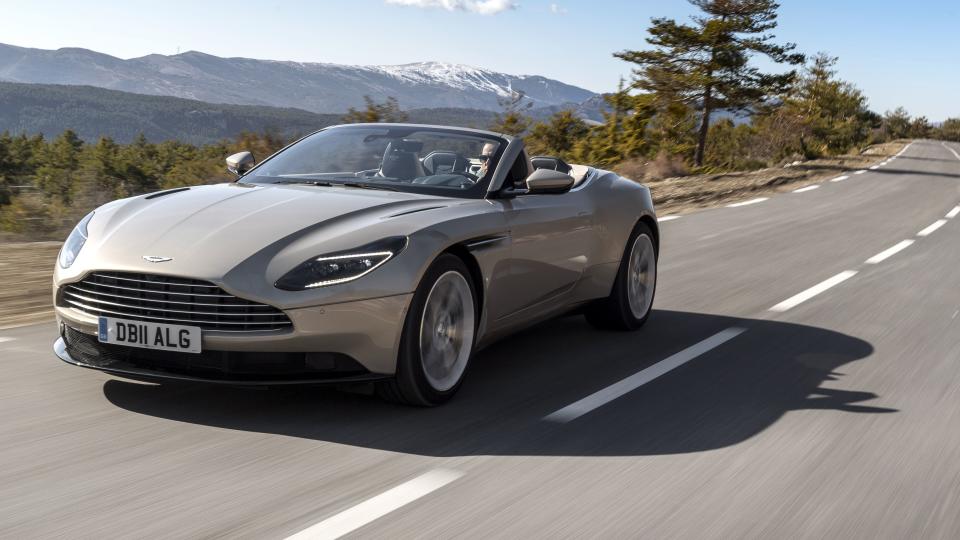
Automotive genres are dying fast. Ours is the era of personal-luxury pickup trucks, daily-driver supercars, and Nurburgring-attacking SUVs. Today, you can buy a brand-new family sedan that outsprints most Ferraris, or a nine-second drag racing car with a full 60,000-mile warranty. We’ve knocked down nearly every wall that defined the automotive niches. Compromise is nearly extinct.
It’s an amazing moment to be alive, to witness how design, engineering, and material science have come together to take the modern automobile to levels of performance and practicality we once thought impossible.
And in a weird way, it makes it all the more notable when an automaker builds a car expressly suited to just one task. That’s the case with this, the 2019 Aston Martin DB11 Volante - the drop-top version of the British company’s newest offering, and a car solely devoted to the swift and elegant art of grand touring.
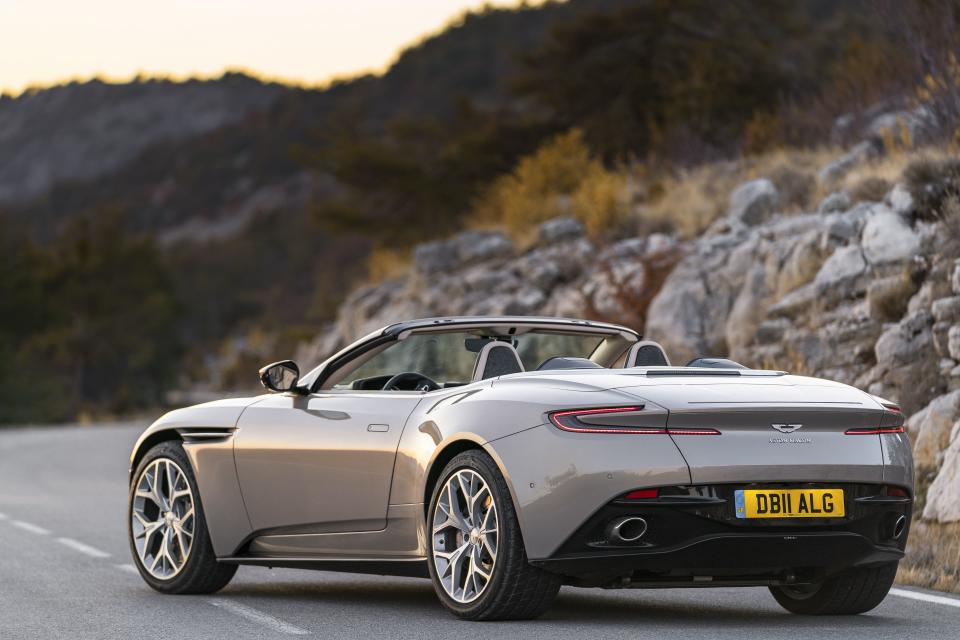
Aston Martin clearly envisions the DB11 Volante as part of a luscious lifestyle. The automaker brought journalists to the South of France, around the corner from Cannes and just a short jaunt from Monte Carlo, to sample the new convertible on the winding mountain passes that snake through the French Alps. It was a taste of the millionaire heir’s lifestyle, if said heir inexplicably socialized only with automotive journalists who speak no French.
Parked among the Cyprus trees, the DB11 is lithe and graceful in cloth-top form. It wasn’t an easy transformation. A folding roof demands a deep, broad compartment to stow away into; uncareful accommodation can make a convertible look humpy and rear-heavy with the top down. Aston Martin engineered the DB11 Volante’s chapeau to cram down into a stack just 10.2 inches tall, which the automaker claims is more vertically compact than any other folding-roof contraption on sale today.

“It’s all about the visual weight and keeping the car elegant,” lead designer Julian Nunn told me. “It’s just the stack height over the rear wheel. We could have ended up with the rear another 30mm higher. To have that kind of weight over the rear would have given the car a heavy, fat back end. It’s got such a long, elegant hood line ... you don’t want to interrupt those lines.”
For reference, 30 mm is roughly 1.18 inches. Nunn and his team agonized over these tiny proportional changes, shaving as much height out of the Volante’s hind quarters as possible. The result: At their highest point, the convertible’s rear fenders are just 11mm (0.43 inches) taller than the coupe’s, a difference undiscernible to the naked eye. With the roof open or closed, the Volante’s silhouette is achingly long, low and lithe.
Visual lightness, but a notable weight penalty: The 4134-lb Volante is 242 lbs heavier than its hardtop twin, 100 lbs of which goes into structural stiffening. To counteract the weight gain, Aston only plans to offer the DB11 Volante in V8 guise, skipping the 600-hp V12 that’s available in the coupe. The Volante is the most rear-heavy of the DB11 lineup, setting 53 percent of its heft on the rear axle; the V8 coupe sports a 49/51 front-rear weight distribution, while the V12 flips those numbers.
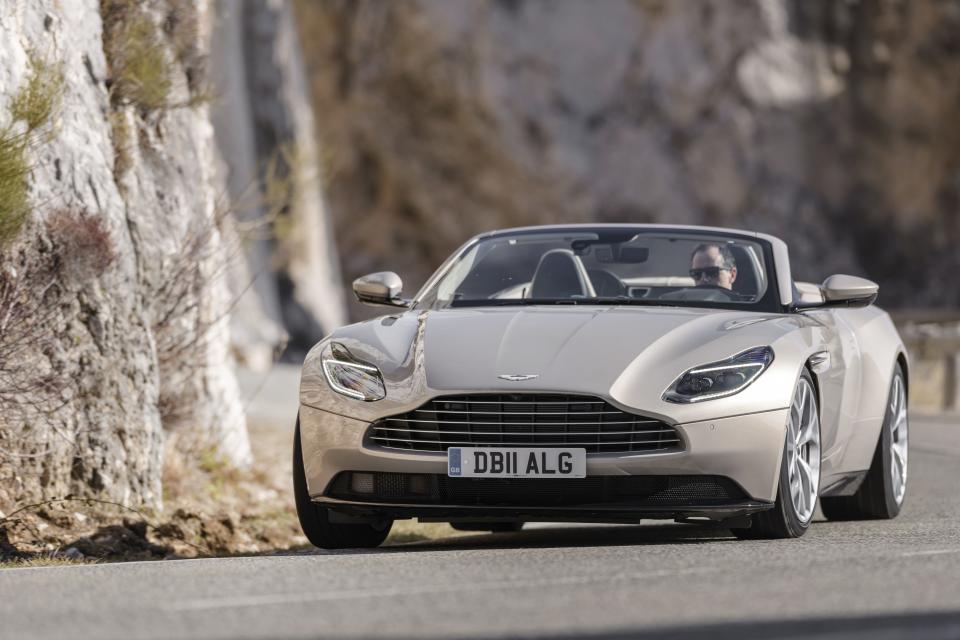
Out on the road, the added mass feels inconsequential. The DB11 has dramatic proportions: At nearly 77 inches wide excluding the mirrors, the Aston is more than three inches wider than a Honda Accord. This makes for some exciting exercises in practical geometry - particularly in this region of France, where the roads get so narrow in places, you feel like you could palm both guardrails by simply stretching out your arms. The DB11’s broad shadow and 110-inch wheelbase make it feel sure-footed on sweepers and hairpins alike.
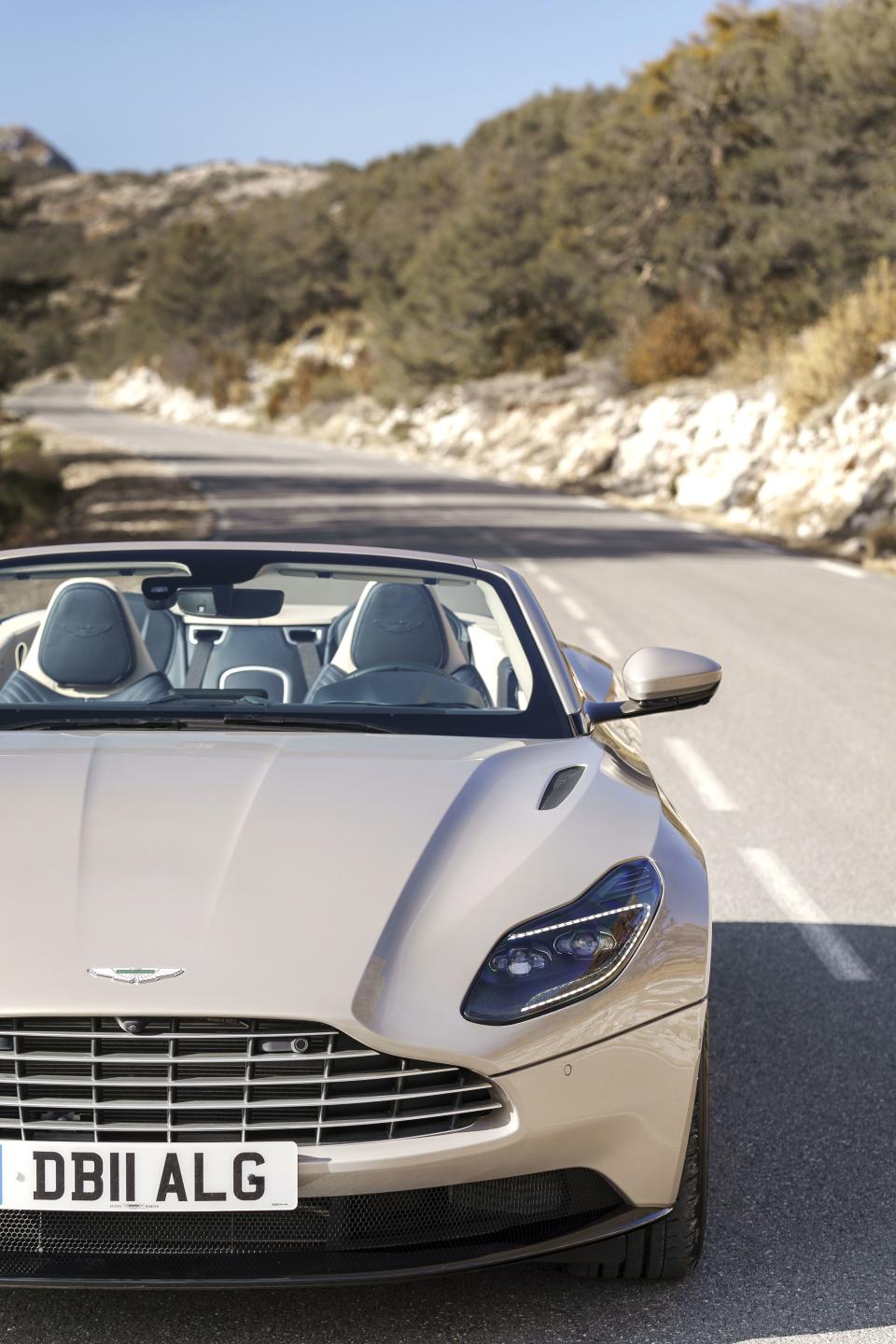
The drop-top DB makes use of some minor rear-axle chassis tweaks - a slightly increased spring rate and a mild decrease in roll stiffness - to maintain the same ride and handling characteristics as the V8 coupe. Three chassis modes (GT, Sport and Sport+) alter the adaptive damping and electric-assist steering. Brakes, wheels and tires carry over from the hardtop model.
As does the Mercedes-sourced 4.0-liter twin-turbo V8. Built by AMG, this inside-vee turbo motor here makes 503 horsepower and 513 lb-ft of torque, hurtling the open-air Aston to a manufacturer-claimed 4.1-second sprint to 62 mph, a number that feels slightly conservative. The engine’s 2000-to-5000-rpm wall of torque and nonexistent turbo lag are identical to what you experience in a Mercedes-AMG sporting this powerplant. But with Aston-designed intake and exhaust, this undersquare, aluminum-block motor plays a much more refined song, a silken rip compared to the thundering hammer-blow roar of the Mercedes-AMG GT. Clicking the drivetrain from GT into Sport or Sport+ mode (adjustable independently from chassis modes) brings sharper throttle response, more engine noise, and firmer, more aggressive shifts from the eight-speed torque-converter automatic. Regrettably, it also elicits drop-throttle pops and rattles from the exhaust system, a ubiquitous supercar pander to carburetor nostalgia that has no place in a genteel grand tourer such as this.
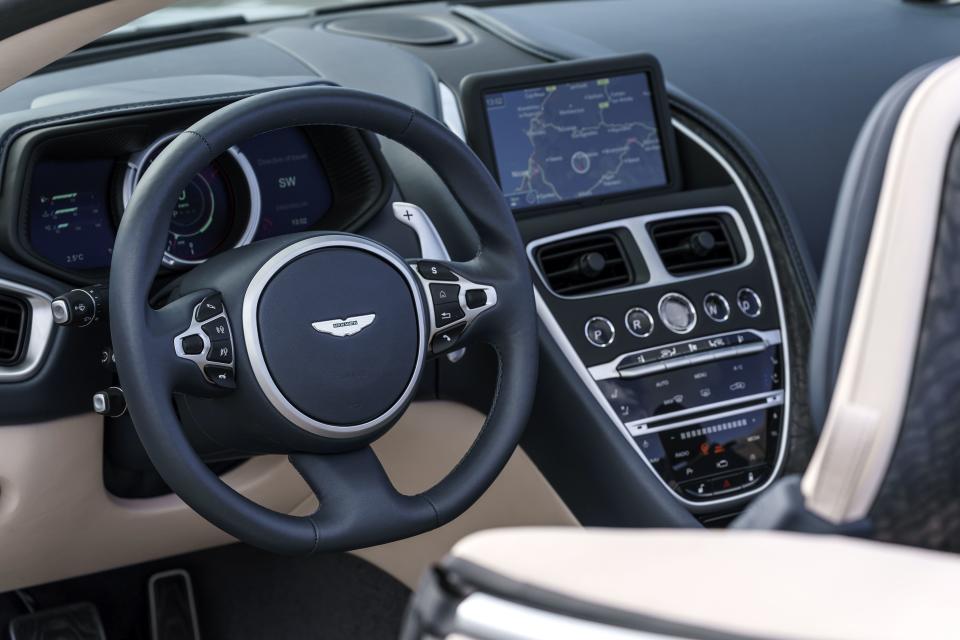
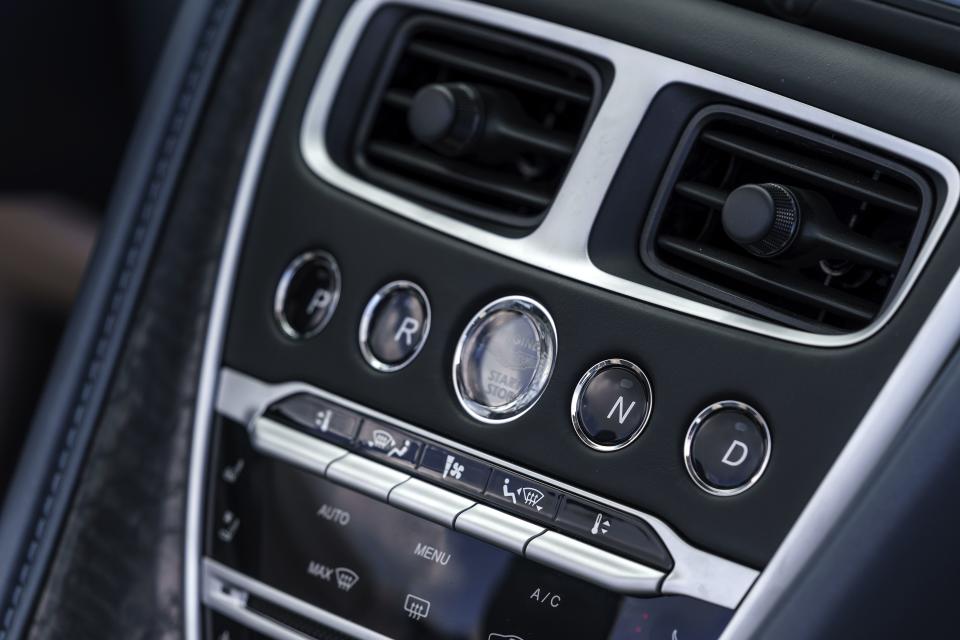
And while I’m noting faults, the DB11’s dashboard center stack hardly feels luxurious enough for a hand-built, limited-production touring car. The capacitive-touch HVAC and stereo controls feel like they belong on a kitchen appliance, icons trapped under a thick layer of clear plastic, emitting a computerlike tone with every prod from your finger. Thankfully, the navigation system is simple enough to use, and the digital instrument panel presents the necessary data cleanly.
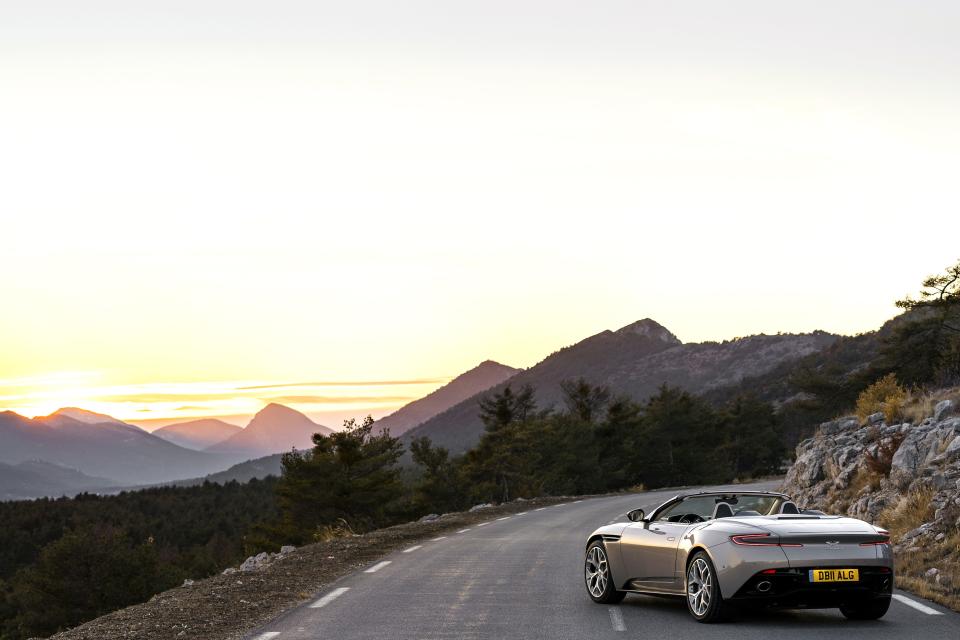
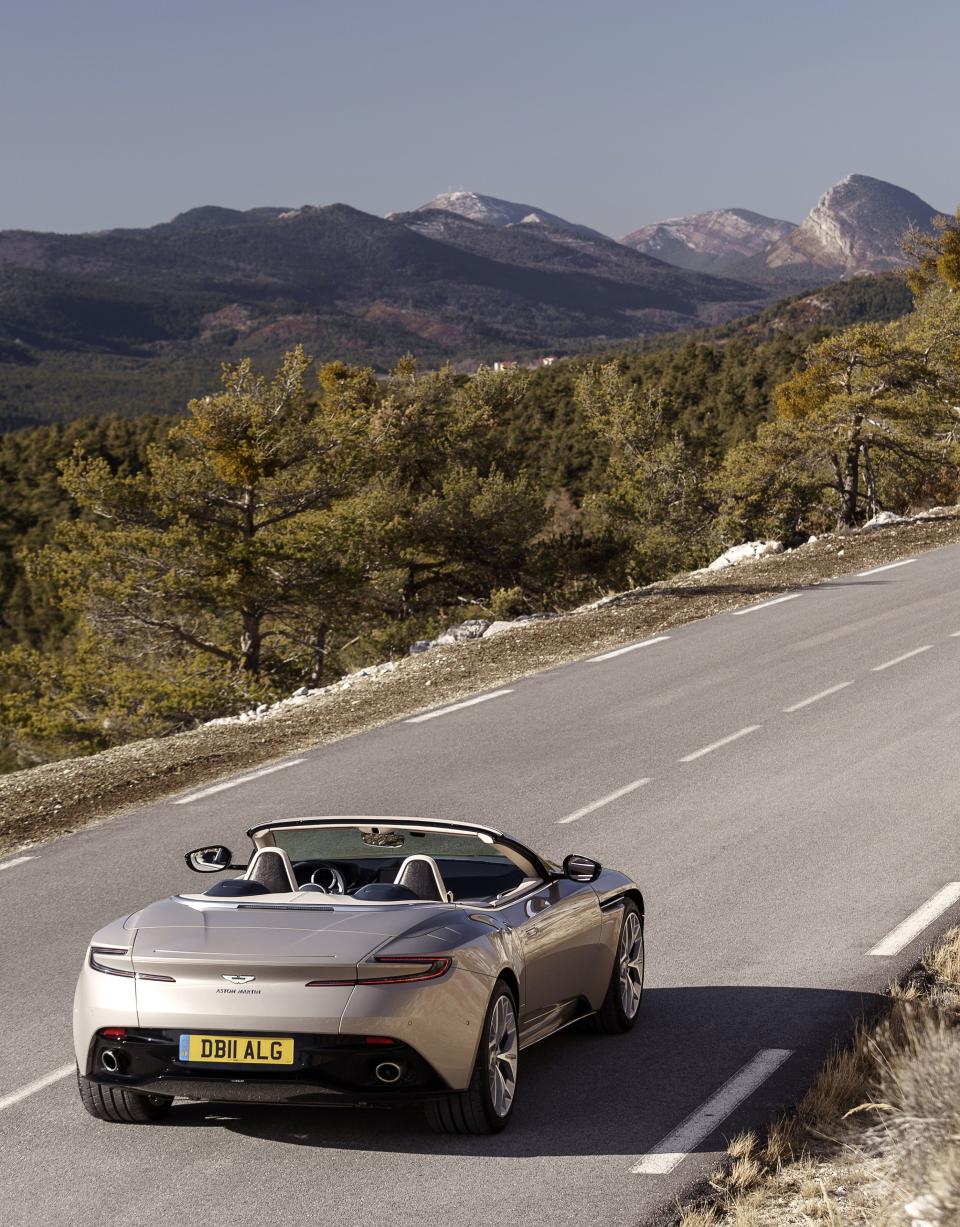
These are minor gripes, nitpicks that can’t distract from the DB11 Volante’s overarching delight. With the roof laid back and the chassis and drivetrain in a sporting mode, this aluminum-bodied beauty hustles mountain roads with competent grace. The steering communicates road textures without relying on overbearing heft or variable-ratio nonsense. There’s the slightest kiss of body roll, just enough to underline the sensation of speed around a graceful arcing bend or a tight, blind switchback. The suspension quells midcorner bumps and jarring heaves with no passenger disruption.
This isn’t an apex-hunting razor. It doesn’t pummel you with concrete dampers, topple you with darty steering, or toss your head with gear-slamming shifts. There’s none of the overwrought drama of a trackday beast, none of the contrived self-seriousness of a posturing muscle machine. It’s fast - 187 mph at the top end - and it can be driven harshly, chucked into corners at the limit of adhesion or pranged off the rev limiter. It’ll take such heavy-handed aggression without issue.
Better, I think, to use the DB11 Volante in a way that lets it really shine: Graceful, fast-paced touring. It’s here, with the wind serenely flowing over the open cockpit, engine burbling in its muscular midrange, that you truly get to experience the beauty of this car. You could make time across the whole of Europe this way without breaking a sweat, admiring the delicate broguing of the leather upholstery as you breezed from border to border.
There’s something admirable about a car so wholly focused on a single task. It defines the whole timbre of the DB11 Volante: Its graceful styling, its impressive performance, its welcoming appointments and competent, comforting demeanor. It’s just a shame that, at a starting price of nearly $220,000, so few of us will ever get to enjoy it as it was meant to be experienced.
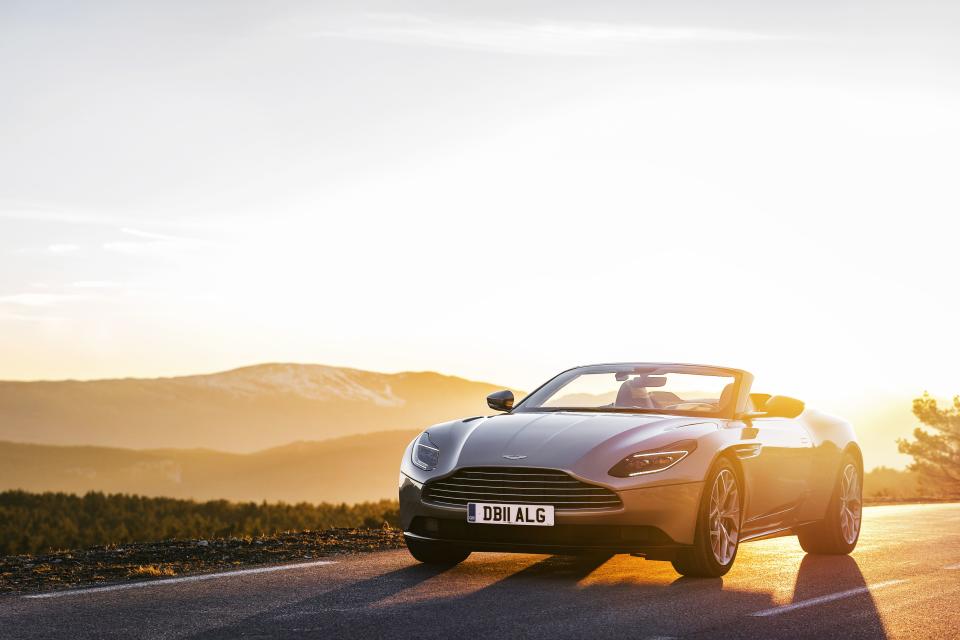

 Yahoo Autos
Yahoo Autos 